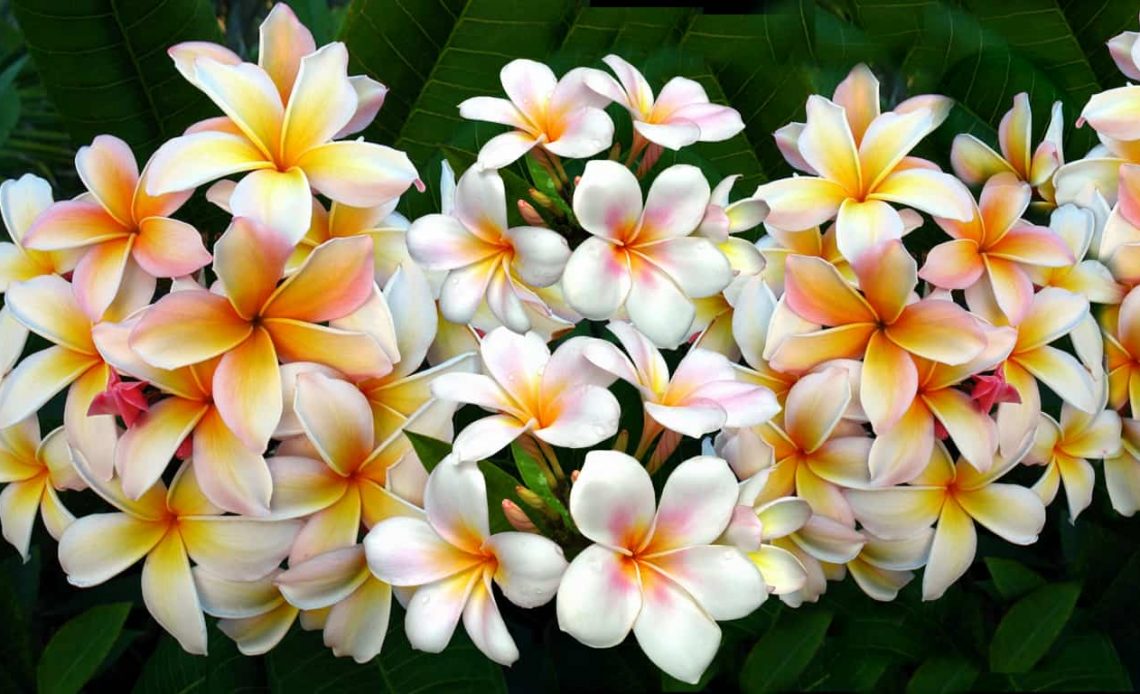
Flowers for Sadness , throughout history, flowers have been a medium for expressing emotions and messages without words. Among them, there are 20 incredible flowers that mean sadness, each with its own unique beauty and symbolism. These blooms serve as a gentle reminder of life’s transient nature, often used to convey empathy, share in sorrow, or offer solace during times of grief. “Flowers that Mean Sadness” are not just symbols of despair; they also represent hope, providing comfort that from sadness can bloom joy once again.
Some flowers that mean sadness have a long history and tradition behind them. They have been used in different cultures and religions to symbolize mourning, loss, and regret. Other flowers that mean sadness have a more subtle connection to the emotion. They may have a color, a shape, or a scent that evokes a sense of melancholy, loneliness, or despair. These flowers can help us cope with our sadness and find beauty in it. Here are 20 flowers that mean sadness and what they represent.
Flowers that Mean Sadness and Sorrow
While flowers often express happiness and celebration, some blooms carry a deeper meaning, speaking the language of grief and sympathy. These flowers with sad meanings serve as a thoughtful gesture during times of sadness, offering solace and expressing our condolences.
Whether searching for flowers for sadness or sadness flowers, this guide explores the symbolism behind these blooms, helping you find the perfect arrangement to convey your emotions.
Some of the most common flowers that mean sadness are:
1. Blue Iris
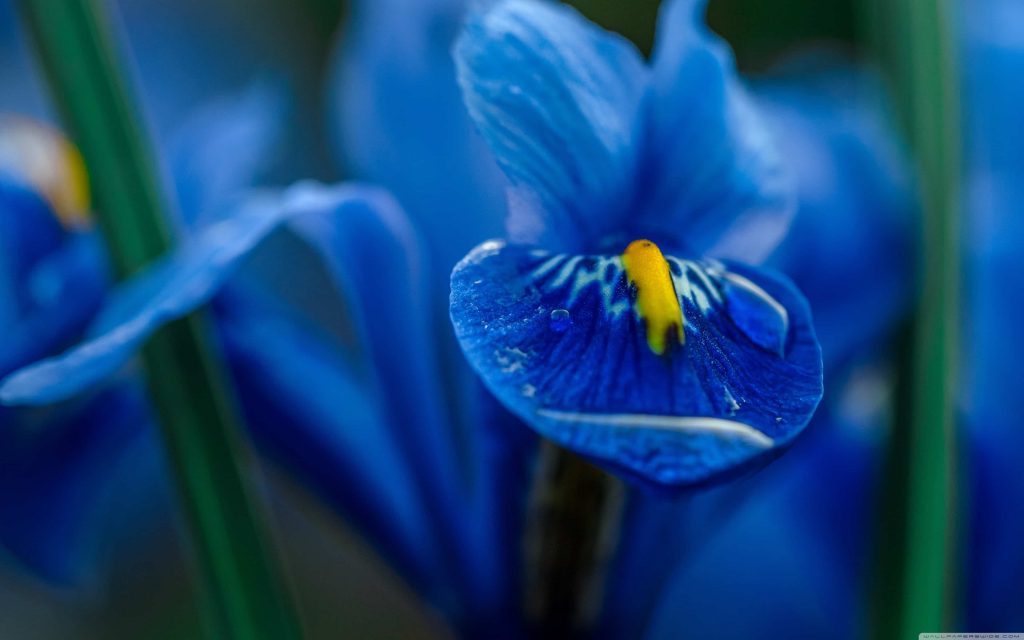
The blue iris symbolizes mystery, creativity, and imagination. It is often used in art and literature to convey a sense of wonder and mystery. This flower has a unique appearance, with petals that fade from dark purple to light blue. The blue iris is named after the Greek word for “rainbow” because of its colorful spectrum.
The blue iris is related to sadness because it can also represent the uncertainty and confusion that comes with grief. It can also signify the hope and beauty that can be found even in dark times. The blue iris is a flower that reminds us to embrace our emotions and express our creativity.
2. Black Roses
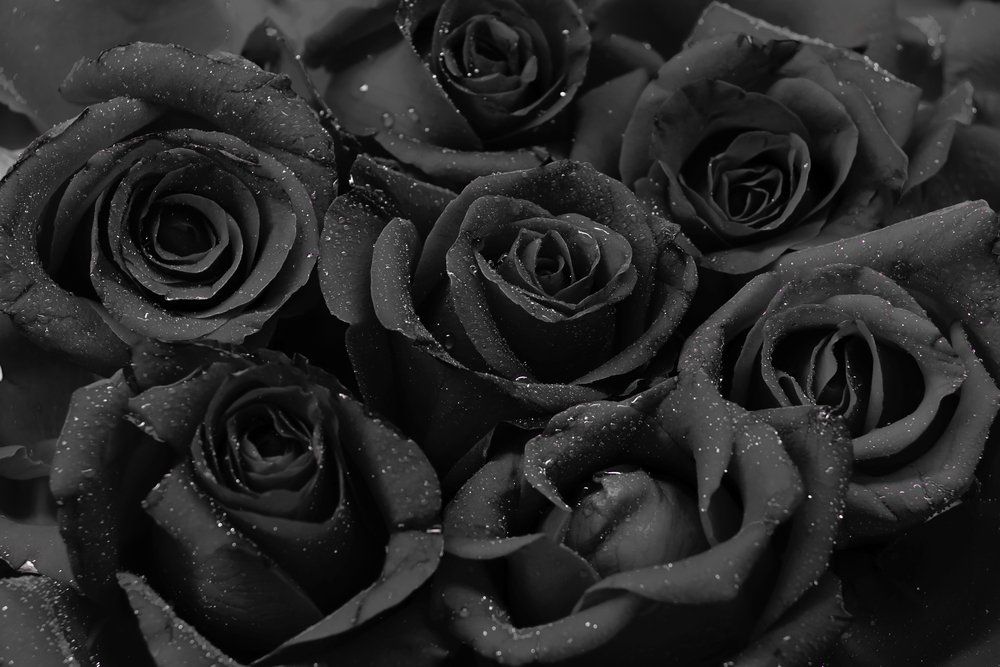
The black rose is a flower that symbolizes death, mourning, and loss. It is often used as a symbol of grief and sorrow. The black rose can also represent the end of a relationship or career. However, the black rose is also associated with change, rebirth, and new beginnings. The black rose can also represent courage and power.
Also black rose is related to sadness because it can also reflect the pain and sorrow that comes with losing someone or something. It can also signify the acceptance and transformation that comes with moving on. The black rose is a flower that inspires us to overcome our challenges and start anew.
3. Lily
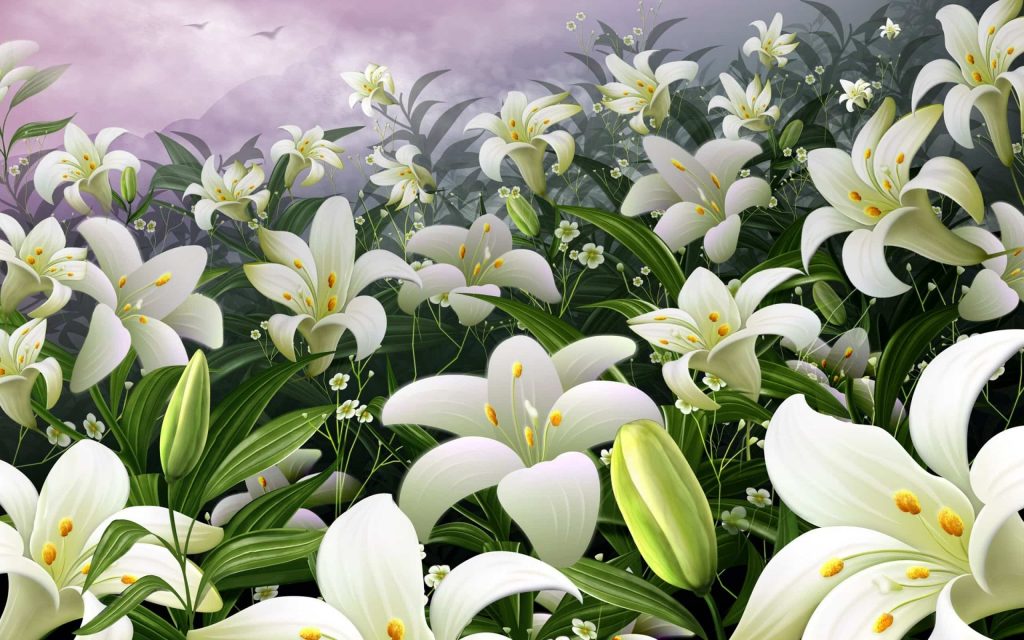
The lily is a symbol of purity, innocence, and rebirth. It is often used in funeral arrangements and memorials, as it represents the soul of the departed. The white lily, in particular, is a sign of mourning and sorrow, while the yellow lily expresses sympathy and sadness. The lily is a flower that symbolizes purity, innocence, and rebirth. However, it can also signify death, mourning, and sorrow. The lily is named after the Latin word for “valley” because of its habitat.
In Christian symbolism, the lily is linked to the Virgin Mary and the resurrection of Jesus. The lily is also a sign of the martyrdom of Saint Joseph, who is said to have died with a lily in his hand. In Greek mythology, the lily was a gift from Hera, the queen of the gods, to Zeus, the king of the gods, to celebrate the birth of their son, Hercules. However, Zeus also had a mortal lover, Alcmene, who gave birth to another son, also named Hercules. Hera was so jealous that she sent a serpent to kill the baby. But Hercules strangled the snake with his bare hands. The drops of milk that fell from Hera’s breast when she nursed Hercules became lilies .
4. Chrysanthemum
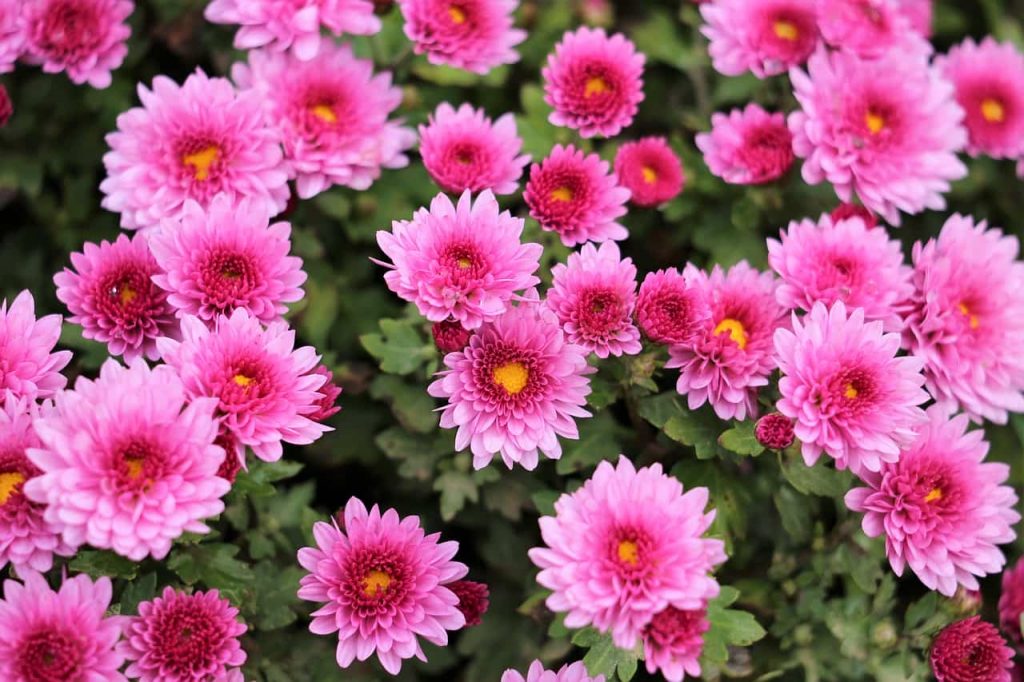
The chrysanthemum is a vibrant flower that has a long history of being associated with sadness and grief. In many cultures, especially in Asia, the chrysanthemum symbolizes death and is used to decorate graves and other mourning rituals. The flower’s late blooming season, typically in late fall or early winter, also adds to its sense of sadness and finality. The flower’s name comes from the Greek words for “gold” and “flower”, which reflect the flower’s original color and beauty. In Chinese culture, the chrysanthemum is a symbol of nobility, elegance, and good luck. It is also associated with the autumn season and the harvest festival. In Japan, the chrysanthemum is a symbol of the emperor and the imperial family, as well as a sign of longevity and rejuvenation. The flower is also used to celebrate various occasions, such as weddings, birthdays, and funerals.
5. Carnation

The carnation is a versatile flower that can have different meanings depending on its color. The pink carnation is a symbol of remembrance and gratitude, while the red carnation is a sign of love and admiration. However, the white carnation is a flower that means sadness. As it signifies pure love and innocence that has been lost. The carnation flower symbolizes love, devotion, and distinction. However, it can also signify rejection, disdain, and contempt. The carnation is named after the Latin word for “flesh” because of its color. In Greek mythology, the carnation was used to make a garland for Zeus, the king of the gods, when he disguised himself as a bull to seduce Europa, a Phoenician princess. The carnation is also the official flower of Mother’s Day and a sign of gratitude, friendship, and remembrance in some cultures .
6. Purple Hyacinth

The purple hyacinth is a flower that symbolizes regret and sorrow. According to Greek mythology, the flower was created from the blood of a young man named Hyacinthus, who was accidentally killed by the god Apollo. The purple hyacinth expresses the pain and guilt of causing someone’s death or suffering. Also Purple hyacinth: The purple hyacinth flower meaning regret, and forgiveness. It is named after the Greek word for “lily” because of its shape.
In Greek mythology, the purple hyacinth was a sign of Apollo’s grief and remorse for killing Hyacinthus, a young prince who was his lover. Apollo and Hyacinthus were playing with a discus, when Zephyrus, the god of the west wind, who was also in love with Hyacinthus, blew the discus off course and hit Hyacinthus in the head, killing him. Apollo was so devastated that he made a flower from his lover’s blood, and inscribed the letters “AI” on its petals, which mean “alas” in Greek .
7. Orchid
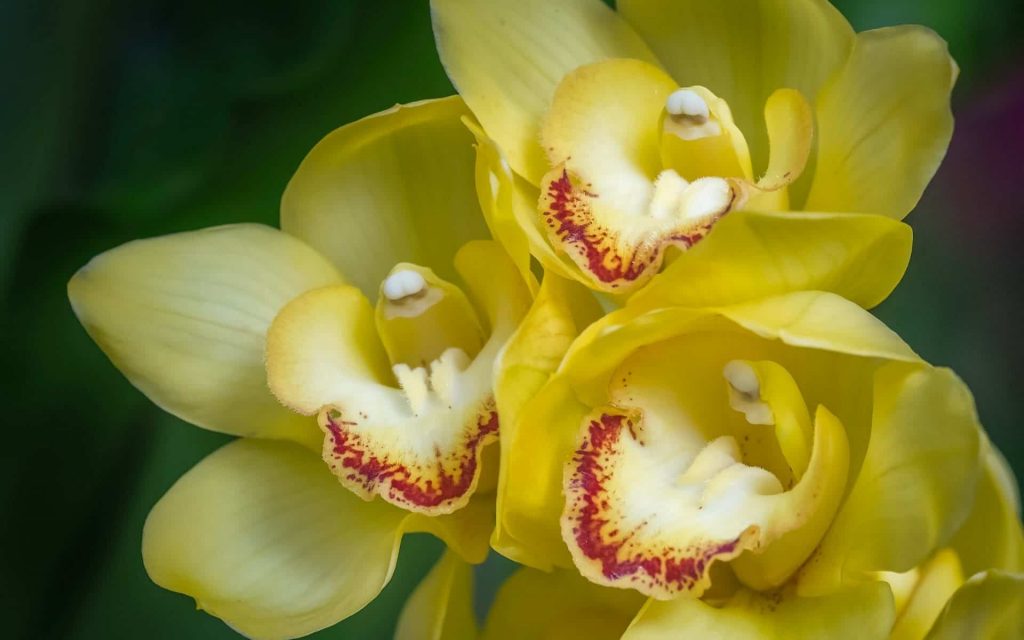
The orchid is a flower that represents beauty, elegance, and refinement. However, some orchids also have a darker meaning, as they can signify loss, mourning, or farewell. The black orchid, for example, is a rare and mysterious flower that means sadness and death. The white orchid, on the other hand, is a symbol of sympathy and condolences. The orchid is a flower that symbolizes love, beauty, and fertility. However, it can also signify luxury, extravagance, and decadence. The orchid is named after the Greek word for “testicle” because of the shape of its roots. According to Greek mythology, the orchid was created from the blood of Hyacinthus, a young prince who was killed by Apollo’s discus. Apollo was so grief-stricken that he made a flower from his lover’s blood. And inscribed the letters “AI” on its petals, which mean “alas” in Greek .
8. White Poppy
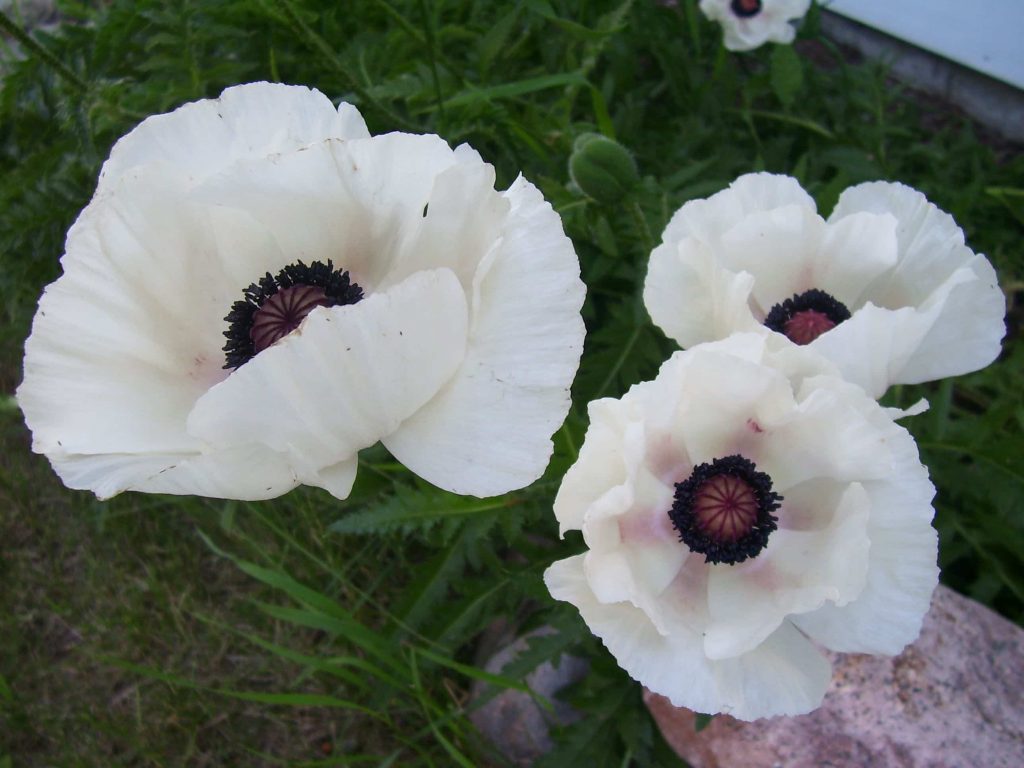
White poppies are a symbol of consolation in a time of death. They are often used in funerals and remembrance services to honor those who have passed away. White poppy is a symbol of peace, as well as a sign of remembrance for all the victims of war. In Greek mythology, it is believed that poppies were created by Demeter to help her sleep and ease the pain for her lost daughter, Persephone. Furthermore, the twin brothers Thanatos and Hypnos, who represent Death and Sleep, were crowned with poppies. The poppies were then used to honor death as well.
9. Gladiolus
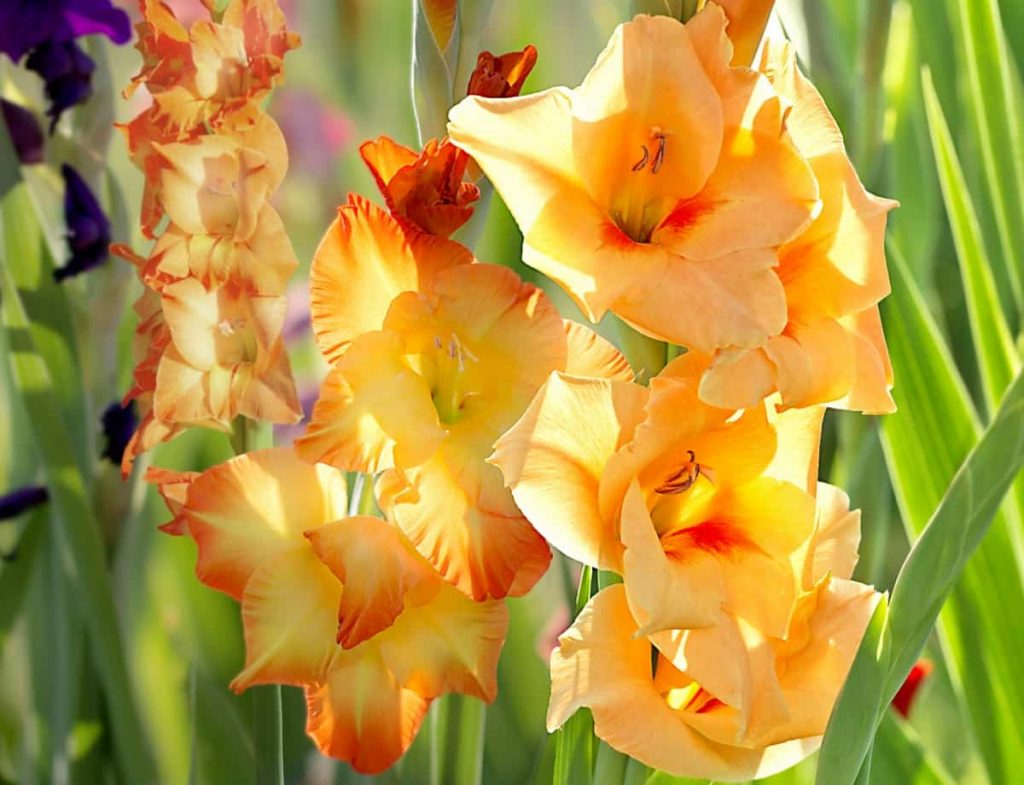
The gladiolus symbolizes strength of character, faithfulness, and honor. It is also a symbol of remembrance, which can be a form of sadness. Gladiolus is a flower that symbolizes strength, loyalty, and honor. It is also associated with passion, deep love, and romance. In Greek mythology, the gladiolus flower was linked to the god Apollo, who accidentally killed his lover Hyacinthus with a discus. A gladiolus flower sprouted from Hyacinthus’ blood, as a sign of Apollo’s grief and remorse. Another myth related to the gladiolus flower was about Ceres or Demeter, the goddess of harvest, who turned one of her disciples into a gladiola after he was beheaded by a thief.
10. Hydrangea
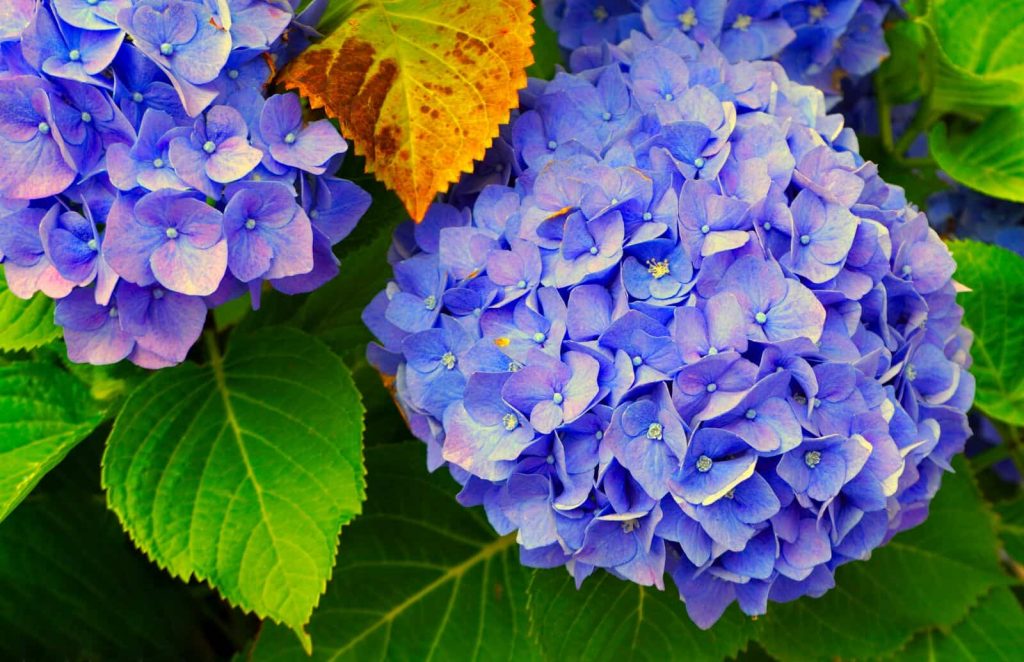
Hydrangeas symbolize heartfelt emotions. They can express gratitude for being understood. In its negative sense, hydrangeas may symbolize frigidity and heartlessness. Hydrangea is a flower that has different meanings depending on its color and context. White hydrangeas convey grace and purity, but also pride and vanity. Pink hydrangeas express heartfelt emotions, romance, and true feelings. Blue hydrangeas indicate feelings of regret and apology. Purple hydrangeas signify deep understanding and gratitude. Green hydrangeas represent renewal and rebirth. In Japanese culture, the hydrangea flower is a sign of apology and forgiveness, as well as a symbol of enduring love. According to a legend, a rich prince tried to woo a maiden with 20 gifts, but she rejected him. The flowers represented the prince’s broken heart, while each blossom on a stem was one gift that he gave her.
11. Blue Violets (Viola odorata)
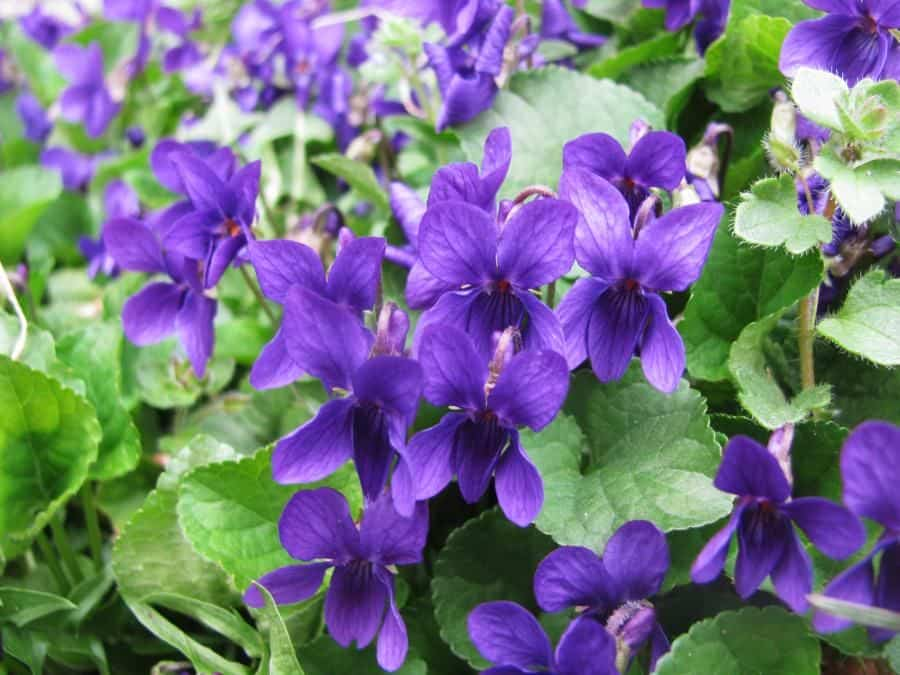
Blue violets are flowers that symbolize sadness, modesty, faithfulness, and spiritual wisdom. They are also related to love and romance, especially when given as a gift. In Greek mythology, the violet flower was created by Artemis, who transformed one of her nymphs into a flower to protect her from Apollo’s advances. This is why violet flowers became a symbol of modesty and chastity5. In Christian symbolism, the violet flower is often seen as a emblem of humility and purity, as well as a representation of the Virgin Mary’s modesty and grace.
12. Bleeding Heart (Lamprocapnos spectabilis)
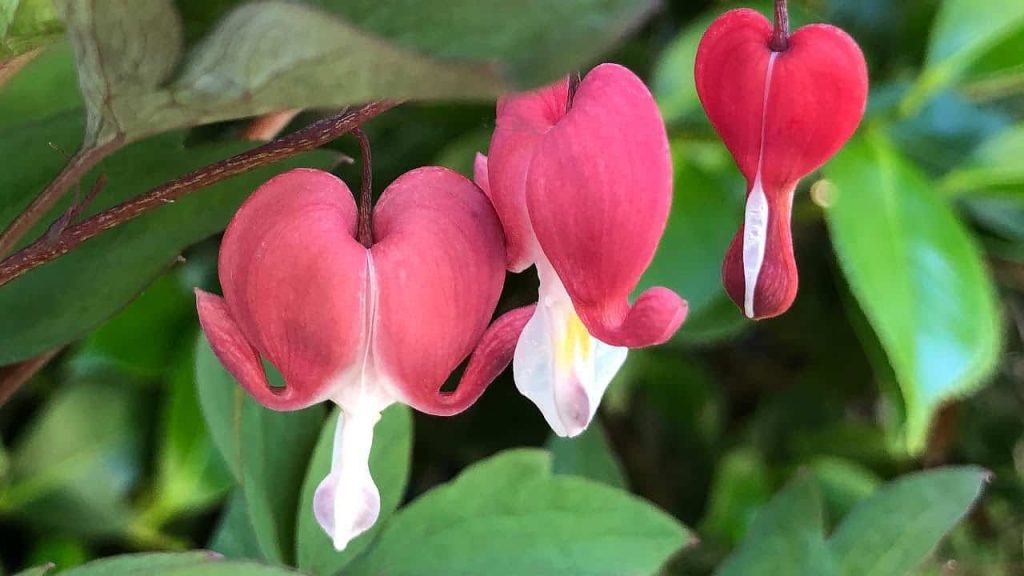
This plant gets its name from its heart-shaped pink flowers that dangle from long, arching stems. Bleeding heart flower’s meaning is said to be about unrequited or rejected love, as well as love and romance in general. It prefers moderate shade and rich, moist soils. Bleeding heart is a flower that symbolizes passionate love, romance, and heartache. It is also a sign of compassion and empathy for others’ suffering. The flower’s name and shape resemble a heart with a drop of blood, which reflects the flower’s emotional meaning.
In Japanese folklore, the bleeding heart flower was the result of a tragic love story between a prince and a maiden, who loved each other but belonged to different clans. The prince gave the maiden two rabbits, two earrings, and a knife as gifts, but she refused him. The prince then killed himself with the knife, and a bleeding heart flower sprang from his blood. The maiden realized too late how much he loved her6. In some Christian traditions, the bleeding heart flower is associated with the tears of the Virgin Mary, who wept for the suffering of Jesus on the cross.
13. Bluebell (Hyacinthoides non-scripta)

Bluebell is a flower that symbolizes happiness, gratitude, and everlasting love. It is also a sign of humility and kindness. The flower’s name and color are inspired by the blue sky and the ringing sound of bells. In Celtic mythology, the bluebell is said to be a portal to the Otherworld, where the dead go to rest. Also In some Scottish folklore, the bluebell is also linked to fairies and witches, who use the flower for magic and mischief. In the language of flowers, the bluebell is often used to express a message of solidarity, comfort, and healing to someone who has lost a loved one.
14. Copihue (Chilean Bellflower)
Also known as the Chilean Bellflower, it was declared the national flower of Chile in 1984. It symbolizes the strength and resilience of the Chilean people. It prefers partial shade, shelter from strong winds, and a well-drained, humus-rich soil.Copihue is a flower that is native to Chile and is also known as the Chilean bellflower. IAlso t is the national flower of Chile and a symbol of patriotism, pride, and beauty. The flower’s name comes from the Mapuche word for “flower”, which is the name of the indigenous people of Chile. In Mapuche mythology, the copihue represents the love story between a warrior and a maiden who loved each other but belonged to different tribes, so their love was forbidden. The flower is also a sign of religion and sacredness, as it is used in rituals and ceremonies.
15. Frangipani
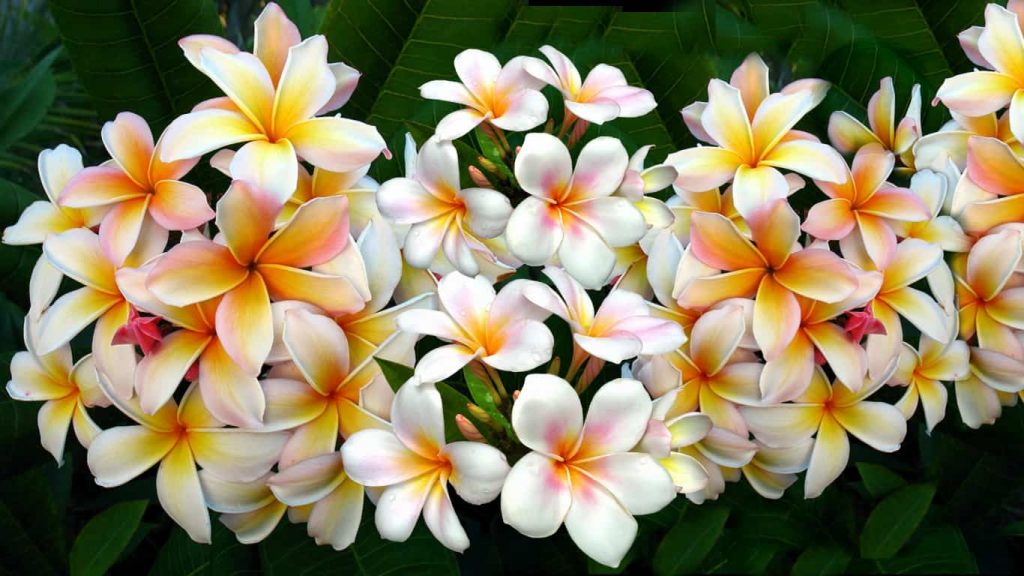
Frangipani is a flower that is native to tropical regions and is also known as plumeria. It is a fragrant and colorful flower that symbolizes love, romance, and charm. It is also a sign of beauty, grace, and elegance. The flower’s name comes from an Italian nobleman, Marquis Frangipani, who created a perfume that resembled the flower’s scent in the 16th century. The delicate flower is widely used in various cultures and religions, such as Hinduism, Buddhism, and Hawaiian. In Hinduism, the frangipani flower symbolizes devotion and loyalty to a partner. In Buddhism, the frangipani flower symbolizes immortality and rebirth. Also In Hawaiian culture, the frangipani flower is a sign of welcome and hospitality, as well as a symbol of aloha and friendship.
16. Lily of the Valley (Convallaria majalis)
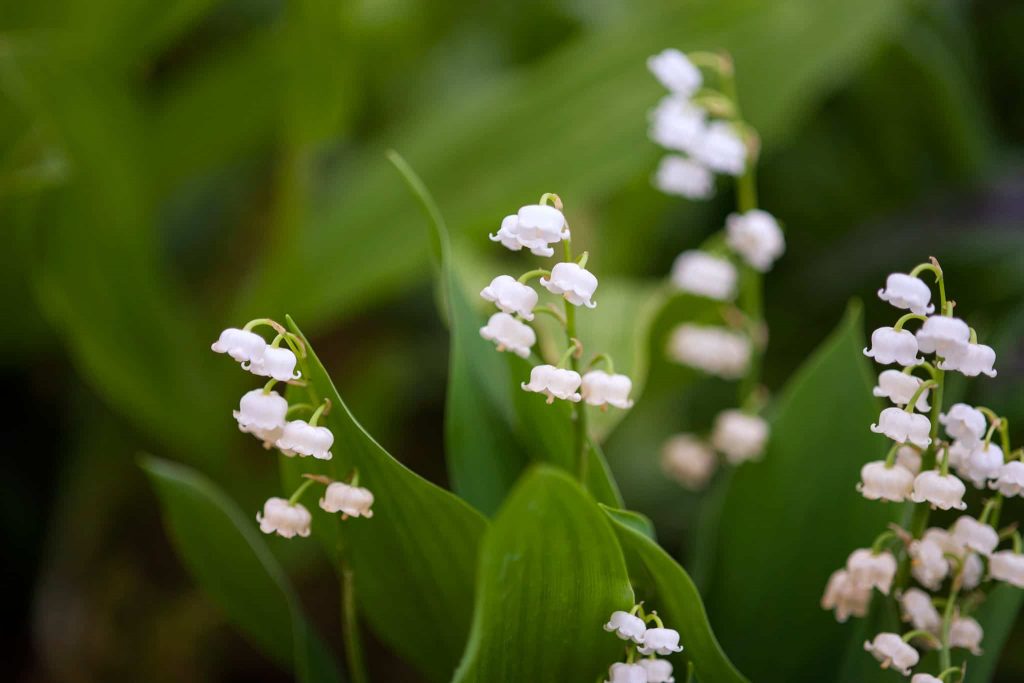
This plant is not a true lily; it’s actually part of the asparagus family. It has a fast growth rate and will quickly spread. Lily of the valley is a flower that symbolizes purity, innocence, and sweetness. It is also a sign of happiness, hope, and renewal. The flower’s name comes from the Latin words for “valley” and “lily”, which describe the flower’s habitat and appearance. In Christian symbolism, the lily of the valley is often associated with the Virgin Mary and the resurrection of Jesus. The flower is said to have sprung from the tears of Mary at the foot of the cross, or from the blood of Jesus on the ground. The flower is also used to celebrate various events, such as weddings, anniversaries, and May Day.
17. Marigold
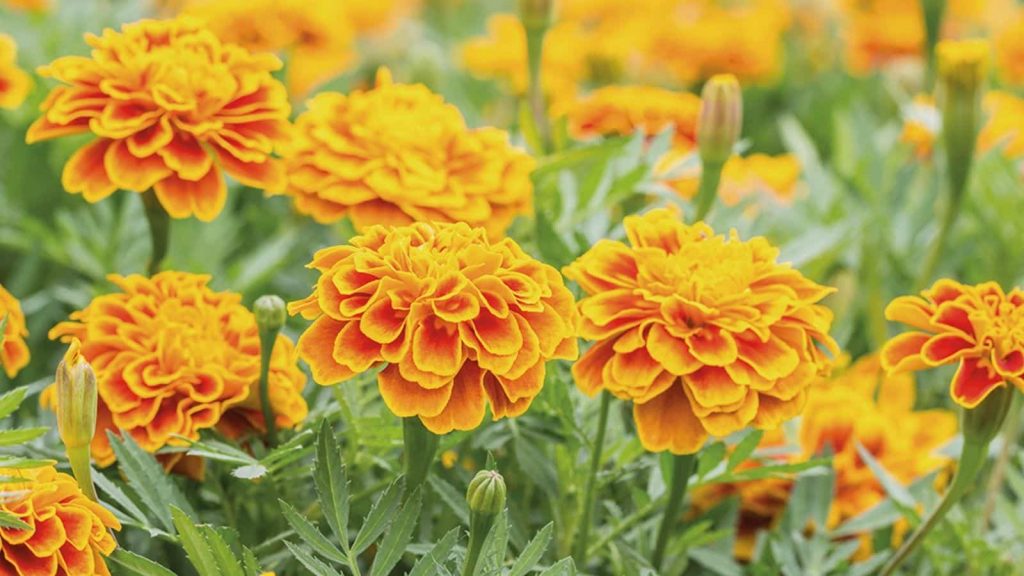
Marigold is a flower that symbolizes warmth, sunshine, and happiness. It is also a sign of loyalty, faith, and creativity. The flower’s name comes from the Latin words for “Mary” and “gold”, which refer to the Virgin Mary and the flower’s color. In some cultures, the marigold is a symbol of death, sorrow, and remembrance, as it is used to honor the departed souls on the Day of the Dead. The flower is also associated with the sun and the fire. As it is said to have healing and protective properties.
18. Red Spider Lily
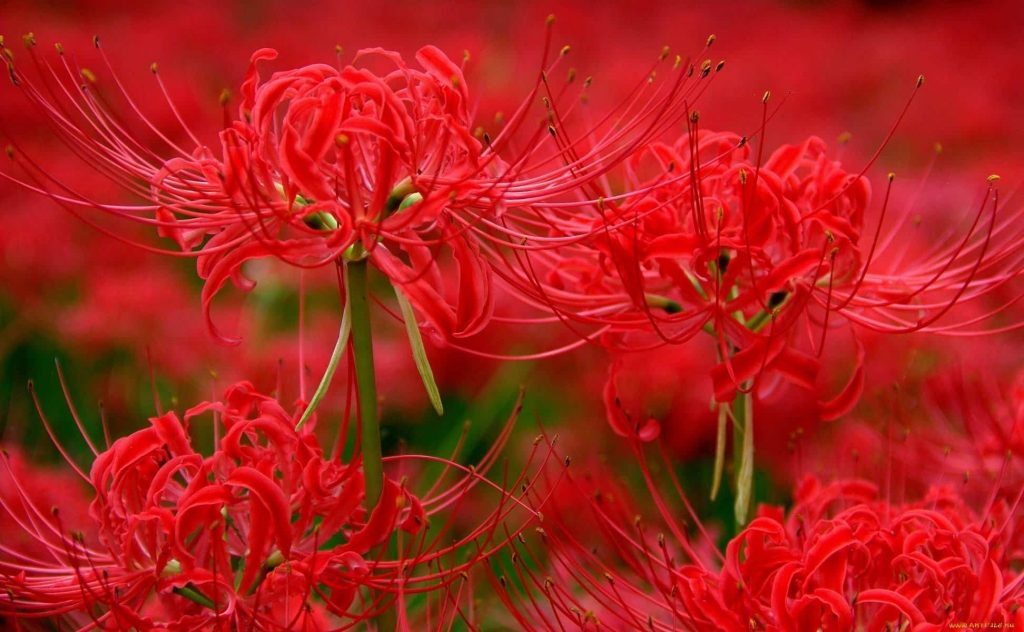
Red spider lilies are strongly associated with death, last goodbyes, and sad memories. They are thought of as the flowers of the heavens. Red spider lily is a flower that symbolizes passion, desire, and seduction. It is also a sign of danger, warning, and betrayal. The flower’s name comes from the Japanese word for “red” and the Greek word for “lily”, which describe the flower’s color and shape. In Japanese culture, the red spider lily is a symbol of death, separation, and reincarnation, as it is believed to grow in the underworld and guide the souls of the dead. The flower is also used to express a message of farewell, regret, or apology.
19. Star of Bethlehem (Ornithogalum umbellatum)
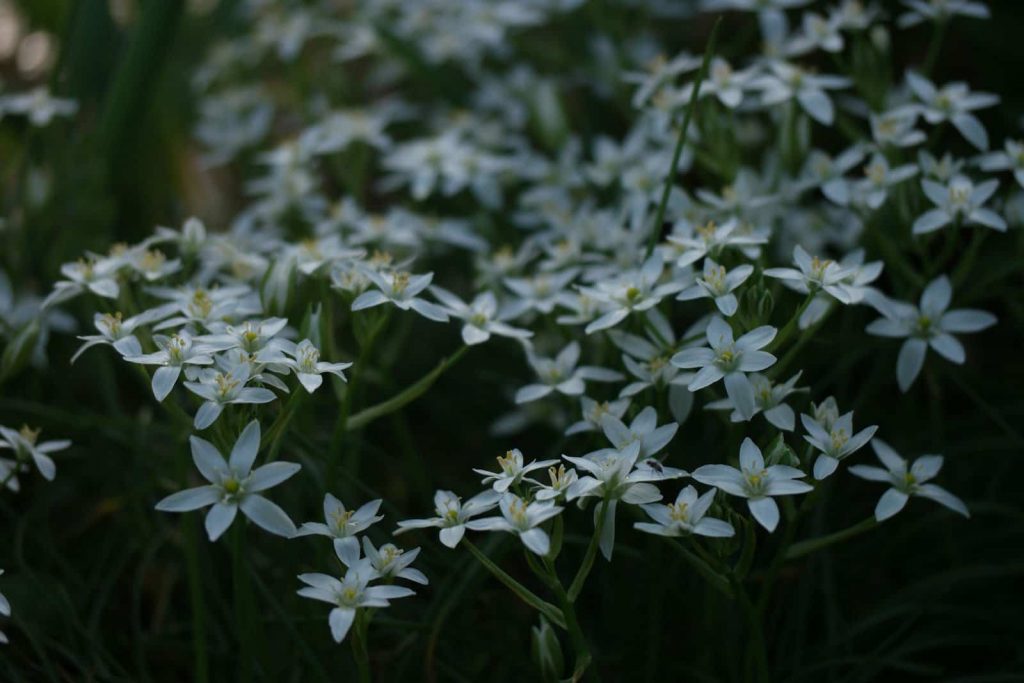
Star of Bethlehem represents the infant Jesus, linked to the symbolism of innocence, purity, redemption, and forgiveness. It prefers a spot with full sun, meaning at least six hours of direct sunlight on most days. It is also a sign of faith, trust, and miracles. The flower’s name comes from the biblical story of the star that led the wise men to the birthplace of Jesus. In Christian symbolism, the star of Bethlehem is a symbol of the nativity, the incarnation, and the salvation of Christ. The flower is also used to express a message of encouragement, support, or comfort.
20. Wormwood (Artemisia absinthium)
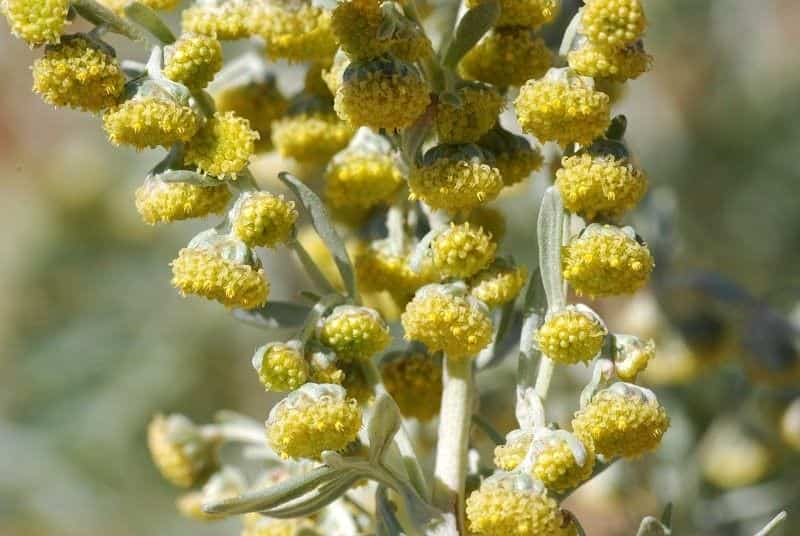
This bitter-tasting plant has been used for centuries for medicinal purposes to reduce pain. And swelling and to treat digestion problems, intestinal worms, and skin infections. The plant’s name comes from the Old English words for “worm” and “wood”, which refer to the plant’s use as a vermifuge and its woody stems. In the Bible, wormwood is a symbol of divine wrath, punishment
How to Use Flowers that Mean Sadness?
Flowers that mean sadness can be used in various ways, depending on the occasion and the message you want to convey. Here are some examples of how to use flowers that mean sadness:
- Send a bouquet of flowers that mean sadness to someone who is grieving or going through a hard time. This is a simple and thoughtful way to show that you care and that you are thinking of them. You can choose flowers that match the personality or preferences of the recipient, or flowers that have a special significance for them. For example, you can send lilies to someone who has lost a loved one, or purple hyacinths to someone who is feeling guilty or regretful.
- Create a floral arrangement of flowers that mean sadness for a funeral or memorial service. This is a respectful and dignified way to honor the memory of the deceased and to express your sorrow and condolences to the family and friends. You can choose flowers that reflect the character or achievements of the person who has passed away, or flowers that have a religious or cultural meaning for them. For example, you can use chrysanthemums for an Asian funeral, or carnations for a Catholic funeral.
- Plant flowers that mean sadness in your garden or in a pot. This is a personal and meaningful way to cope with your own sadness or grief, or to remember someone who is no longer with you. You can plant flowers that remind you of the person or the event that caused you sadness, or flowers that bring you comfort or hope. For example, you can plant orchids to symbolize the beauty and resilience of life, or blue violets to represent faithfulness and loyalty.
Conclusion
Flowers that mean sadness are more than just beautiful plants. They are powerful symbols that can communicate emotions that are hard to express in words. By using flowers that mean sadness, you can show your support and compassion to someone who is hurting, or pay tribute to someone who has left a mark on your life. Whether you send, create, or plant flowers that mean sadness, you can be sure that they will touch the hearts of those who receive them.
Summary Of Incredible Flowers that Mean Sadness
| No | Flower Name | Scientific Name |
|---|---|---|
| 1 | Chrysanthemum | Chrysanthemum spp. |
| 2 | Black Roses | Rosa spp. |
| 3 | Carnation | Dianthus caryophyllus |
| 4 | Lily | Lilium spp. |
| 5 | Purple Hyacinth | Hyacinthus orientalis |
| 6 | Orchid | Orchidaceae |
| 7 | White Poppy | Papaver somniferum var. album |
| 8 | Gladiolus | Gladiolus spp. |
| 9 | Hydrangea | Hydrangea spp. |
| 10 | Blue Violets | Viola sororia; Viola odorata |
| 11 | Bleeding Heart | Lamprocapnos spectabilis |
| 12 | Bluebell | Hyacinthoides non-scripta |
| 13 | Copihue (Chilean Bellflower) | Lapageria rosea |
| 14 | Frangipani | Plumeria spp. |
| 15 | Lily of the Valley | Convallaria majalis |
| 16 | Marigold | Tagetes spp. |
| 17 | Red Spider Lily | Lycoris radiata |
| 18 | Star of Bethlehem | Ornithogalum umbellatum |
| 19 | Wormwood | Artemisia absinthium |
| 20 | Blue iris | Iris germanica |

The way it explores the symbolism of flowers in expressing sadness is truly insightful. It’s fascinating to learn how different cultures use various flowers to convey feelings of sorrow and grief. This piece has not only expanded my knowledge about flowers but also about the universal human experience of sadness. I appreciate the research and thoughtfulness that went into this. Looking forward to more enlightening articles on this site.
Thank you for your thoughtful response! We’re glad the article on flowers and sadness resonated with you. Flowers can be powerful symbols, and understanding their use in expressing grief across cultures is a beautiful way to connect with the universality of human emotions.
I had no idea that the Chrysanthemum was associated with sadness. I’ve always loved their vibrant colors. This gives me a whole new perspective on them.
That’s a great point! Chrysanthemums do have some interesting cultural associations. While they can symbolize sadness in some cultures, it’s not universal. In many places, they represent joy, longevity, or admiration.
This is a beautiful, yet melancholic list. I never realized so many flowers held connotations of sadness. Is there a specific flower you’d recommend for expressing sympathy or mourning?
Great resource! Is there a similar list for flowers that symbolize happiness or new beginnings?
The idea of ‘sad flowers’ is quite poetic. It’s like each petal holds a story of loss or longing. I’m curious to see which flowers are included in the list.